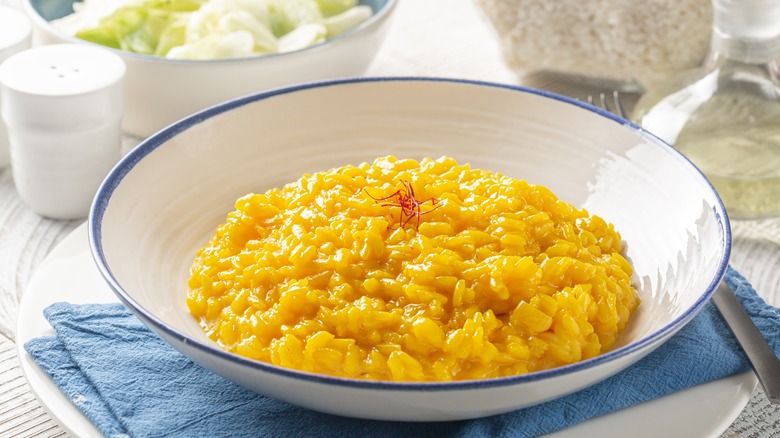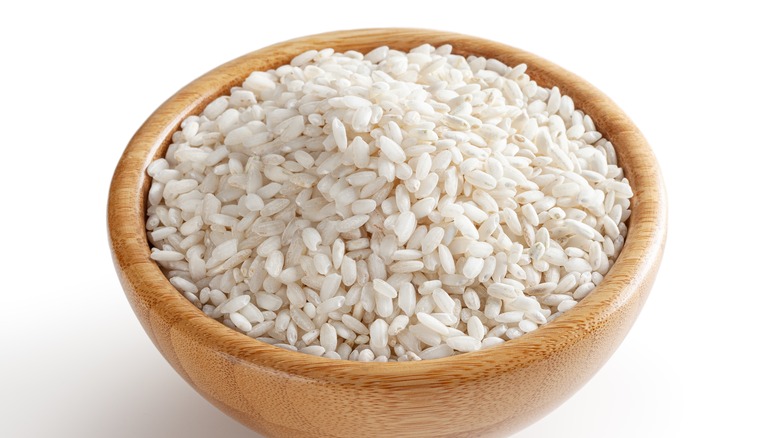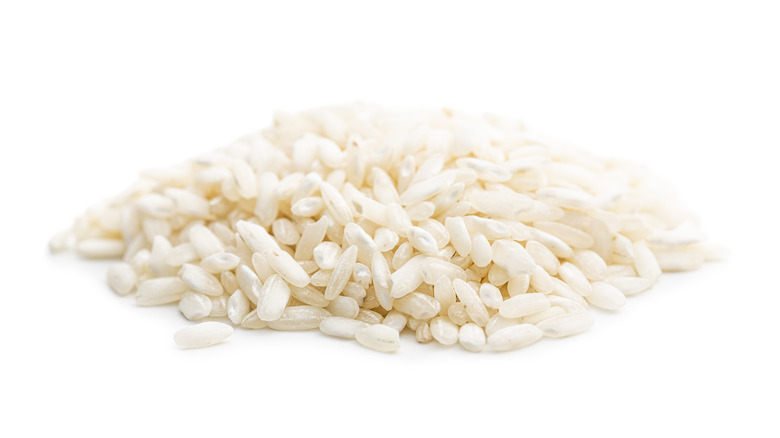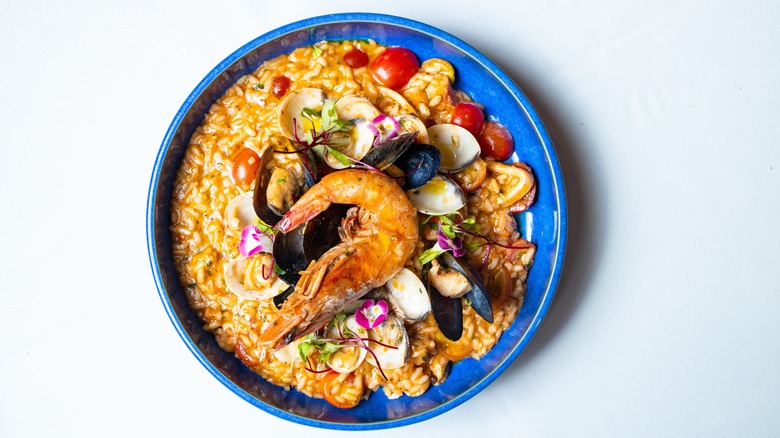Arborio Vs. Carnaroli Rice: Is There A Difference?
This might come as a surprise, but per the South China Morning Post (SCMP), rice isn't a preferred grain among Italians; instead, it is viewed as a food item that is consumed by the sick or those who are recovering from illness or experiencing stomach and intestinal problems.
But that hasn't kept Italy, which grows about a million tons of rice every year – from becoming Europe's largest rice producer. Four main types of rice are grown in Italy: tondo or rounded; medio or medium; lungo A or long A and lungo B, per Sustainable EU Rice. However, the only two types available in the United States that make the cut for risotto are Arborio and Carnaroli, per Serious Eats.
It all comes down to the way two starch molecules, which are present in all rice, manifest in both Arborio and Carnaroli. These two types of short-grain rice contain more of the starch molecule amylopectin which, when cooked, tends to make rice sticky and more creamy, which is highly desirable when making risotto.
Arborio rice is popular amongst home cooks
When Americans reach for a bag of rice to make risotto with, chances are they'll be grabbing a bag of Arborio rice. Once only grown in the Arborio commune in northwest Italy's Piedmont region (per MasterClass), the grain is now grown stateside, in fields located in California and Texas, according to The Spruce Eats. Italian Arborio is considered "superfino," or the highest grade, with the plumpest grains, per Los Angeles Times. The outlet also explains that this type of rice needs the longest amount of time to cook and has the capacity to absorb plenty of liquid.
As with most short-grain rice, Arborio contains high levels of amylopectin, which is necessary when making risotto. But Arborio isn't exclusively used to make risotto, it can also be used as the lead ingredient for rice-based desserts like rice pudding, which can be cooked on a stovetop and served cold, per Food Network. Arborio rice has both brown and white varieties and while brown is more nutritious, it won't give you the same creamy result in risotto.
Carnaroli rice is the chef's choice
Arborio may be the go-to ingredient for homemade risotto, but there is another type of rice that is preferred among chefs in the Italian region of Piedmont, per LA Times. As Marcella Hazan, widely known as the "Godmother of Italian cuisine" pointed out in 2007, "Carnaroli is the best rice for risotto ... Carnaroli doesn't go from undercooked to overcooked in a second; it is starchy — and it has more finesse than arborio," per Saveur.
Carnaroli is a relatively young type of rice — it was first bred successfully in 1945 from two different varietals: Lencino and Vialone Nero, according to DF Gourmet. It was first grown in Milan, and it was named after a commissioner of the National Rice Authority, Emiliano Carnaroli. Today, Carnaroli can be found in Italy's Po delta, as well as in the regions of Piedmont and Lombardy.
Like Arborio, Carnaroli is classed as "superfino" and seen as the ideal rice to make risotto with because it can keep its firmness even after it is cooked and it is able to absorb flavors properly, per Food Explore.
Can Arborio and Carnaroli be used interchangeably?
Arborio and Carnaroli rice are more alike than they are different; both are classified as Japonica, short-grain rice varietals, both are polished white, and both contain very high levels of amylopectin, per Serious Eats, which is how they became the go-to rice to make risotto with. Though they are so similar, the resulting risotto from each grain will be slightly different.
If you make risotto with arborio rice, which has longer grains, you will have a "thicker, softer" risotto, while Carnaroli yields "the creamiest" risotto, per Cuisine at Home. This difference aside, both Arborio and Carnaroli don't just taste delectable in risottos, they shine in paella as well, per Yahoo.
Arborio's ability to soften while cooking makes it a good choice for puddings made with rice, or in a minestrone soup, while Carnaroli's ability to remain al dente, no matter the temperature makes it a good rice to make a salad (insalata de riso) with.



